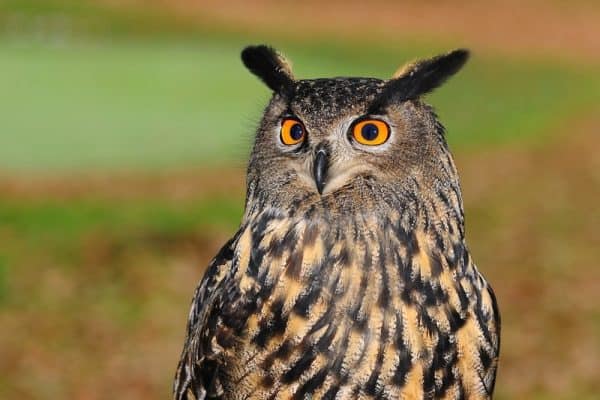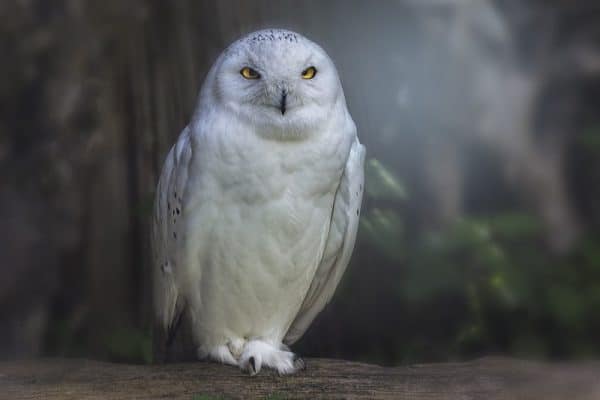In association with Melissa Hart
When it comes to the supernatural powers of the natural world, there are few animals who hold such an important place in magical folklore as the mighty owl. Across all seven continents, owls have been an ever-present and powerful figure in human societies for thousands of years. The owl remains a mysterious creature to all of us, a bird we have endowed with myriad qualities as we try to explain the unearthly and sometimes ominous energy of this ancient creature.
While in the western world — from the Celtic Druids of pre-Roman Britain right up to the 21st century — we tend to associate owls with wisdom and fortune-telling abilities, this is not the case across the rest of the world. In Africa and India for example, the owl has for millennia symbolized death, illness and foreboding. In Celtic and Gaelic cultures, they have been attributed with shape-shifting abilities, and are thought of as chimeras who take on the form of our desires and fears.
One common thread that links these depictions of owls in folklore is that we as a species are unable to understand the animal and interpret its behaviour. Owls remain shrouded in mystery, representing that which we do not know — or perhaps do not want to know — and almost every civilization has considered the owl to have powers and abilities beyond the natural world. Let’s take a look at some owl folklore from across the world, to see if we might better understand these noble creatures.
Europe

The peoples of Europe have had an oscillating relationship with owls over the course of history. The Encyclopaedia Britannica charts European’s relationship with owls back to ancient Greece, where the Greek goddess of reason, Athena, was supposed to take the form of an owl, keeping watch over the ancient city state of Athens, and resolving disputes between the gods of Mount Olympus. Even the official website of the San Diego Zoo comments on how mysterious it is to us. The ancient Greek connection is the reason why owls are still so frequently endowed with powers of wisdom and knowledge, which is why you’ll find owls adorned on centres of information across the continent, from libraries to universities, to law courts and bookstores.
This connotation changed somewhat during the Middle Ages; owls took on a more sinister association, being thought to symbolise death and evil. Following the Medieval period, owls again took on a meaning of wisdom, while being further endowed with protective powers. This representation can still be seen today across European cities, where owls are famously carved on religious sites, representing safety and good fortune to pilgrims. The most prominent example of this is the Magic Owl of Dijon in France, which, according to the online casino Betway’s Good luck Index, is a stone carving meant to grant one wish to anyone who touches it with their left hand. There must be good reason to believe such powers exist, as the owl has been rubbed so many times over hundreds of years that the statue has faded beyond recognition.
The Americas

Owls loom large in Native American folklore across the entire region. There are a number of prominent gods and spirits in Native American culture which take on the form of owls, including the Big Owl Apache, Stikini and Uhuapeu the Owl Master. Owl folklore varies across different tribes, with many in the eastern regions of North America associating the owl with stupidity and foolishness, with the nocturnal behaviour of the owl considered a punishment from the gods for their annoying behaviour.
On the West Coast, however, many tribes take a different stance completely. Pacific Northwestern tribes frequently use owls in their totem pole designs, as they are attributed with magical powers of protection and foresight, able to prepare a tribe for anything that may threaten them. Given that owls can see in the dark, it is not surprising that around a dozen tribes are known to consult owl-themed items when there is something they want to know. Like other cultures around the world, the owl retains a dark and ominous aura among many Native American tribes, with their hoot often being taken to mean that someone has died.
Owls may take on a wide variety of contexts and meanings across American culture, but one common thread is that it is widely acknowledged that owls must be respected — and disrespected at your own peril.
Even today, representations of the owl are constantly in flux, with a recent surge in the popularity of owl feathers as an accessory being linked to a belief that the feathers will not only bring good fortune to the wearer but also endow them with the wisdom of the bird, in the popular vein of British magick. Owls represent the unknowable and the dark, and our tendency to appeal to the owl for guidance, protection, knowledge and hope shows that the owl is just as powerful as it was back in ancient Greece.





